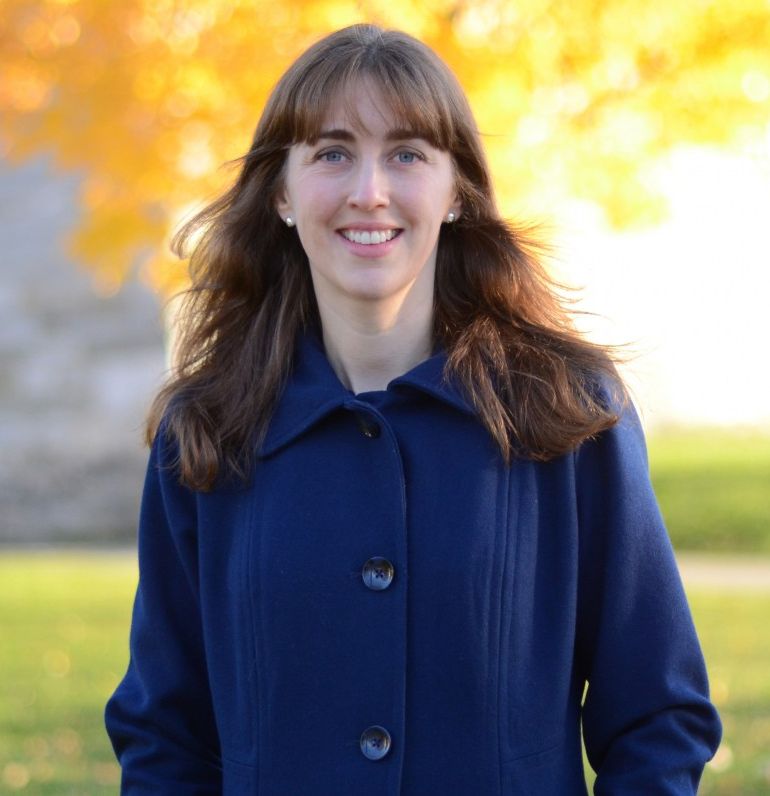 In each issue of Keynotes, we profile a faculty member who makes innovative use of the library and/or academic technology. This issue features Caitlin Myers, Associate Professor of Economics and 2015-2016 Digital Liberal Arts Faculty Fellow.
In each issue of Keynotes, we profile a faculty member who makes innovative use of the library and/or academic technology. This issue features Caitlin Myers, Associate Professor of Economics and 2015-2016 Digital Liberal Arts Faculty Fellow.
What is your current research project?
I’m never working on just one thing! But if I can pull one ball out of the air for examination, it would be a project on Texas HB-2, a law passed in 2013 that closed down more than half of the abortion clinics in the state. Along with co-authors at two Texas universities, I’m working on a project that provides empirical estimates of the causal impacts of these clinic closures on women’s health. I’m also working to develop new creative visualizations of the empirical work that will make it accessible to a broad audience that might not be so interested in the tables of numbers and stars that empiricists like me usually churn out.
How do you involve students in your research?
Middlebury students make incredibly valuable contributions to my work. Anna Cerf (a geography major) and Birgitta Cheng (a double major in economics and computer science) have played key roles in the Texas HB-2 project, helping me to track clinic operations, create maps showing changes in abortion access, and create a web-based dynamic visualization that will allow users to explore how clinic closures over time are affecting women’s health.
How does your research inform what you do in the classroom?
The connections between scholarship and teaching run both ways. I teach courses on empirical methodologies, and I learn a lot from talking with students about the papers we read and about their own interests and projects. I also try to draw back the curtain on my own research, frequently sharing whatever it is that I’m thinking about, bringing in new ideas, new results, and even newly-arrived comments from the referees who review my papers prior to publication. My hope is that offering a behind-the-scenes view of the process gives students a chance to think more critically about their own and others’ research.
In this internet age, how do you help students to avoid “alternative facts” and work with reliable sources?
The internet has dramatically lowered search costs for students seeking information, and I think that’s a good thing. (Let me count the ways I love Google Scholar….) But as the information pours in, it’s more important than ever that we sift through it with a critical eye. Students in my courses are nearly always searching for empirical evidence, and I steer them towards primary sources published in reputable, peer-reviewed journals. But I also caution them that these are noisy signals: chance findings and bad research designs get published all the time. Long publication lags also cause good new evidence to languish in “working papers” for years. In the end, it’s up to the students to vet what they find, asking fundamental questions about correlation versus causation, precision, replication, and plausibility.
This sounds like it involves a lot of orchestration and communication between you, your students, and the library that’s providing the materials and services to support all of this! What advice would you give to other faculty, to students, and to the library about how we can all evolve in this fast-changing environment?
I’d say the most important think that all of us can do is talk to each other to share ideas and approaches. Students can readily find information without leaving their computers, but they still can use help and advice in sifting through it all as they evaluate, summarize and document sources. This semester I’m sending students in my first year seminar to visit our wonderful data librarian, Ryan Clement. Ryan will introduce them to Zotero and also to ArcGIS online, and also hopefully inspire them to be frequent library visitors during their time here.